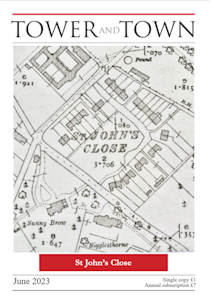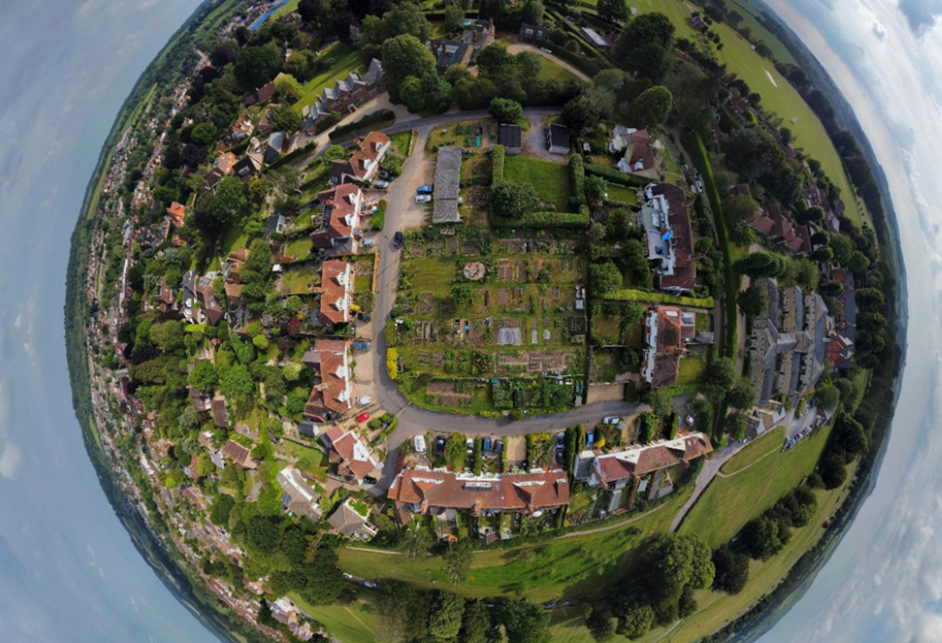

Tower and Town, June 2023 (view the full edition) (view the full edition)The Garden City ConceptIn the last two decades of the 19th century several major industrialists, in particular George Cadbury with the creation of Bournville Village, the Lever Brothers at Port Sunlight, and Joseph Rowntree with his garden village at New Earswick outside York, had set out to establish a better quality of housing for their workers. It was an age that also produced the great social reformer and urban planner Ebenezer Howard who became highly active in promoting his views during the 1880s. In the 1890s he began to develop his ideas on the creation of the Garden City, a phrase that he was the first to adopt in his highly significant publication "Tomorrow - a Peaceful Path to Real Reform". The concept gathered momentum; in 1899 the Garden City Association was formed, and by 1902 Howard had secured sufficient interest and backing to proceed with the development of his first garden city, for which he chose land at Letchworth in Hertfordshire. Howard's vision covered the overall financial, social and structural planning, but with his lead architect Barry Parker, who has been described as "an undiscovered genius of the Arts & Crafts movement", he also established more detailed criteria for the actual housing. These guidelines included a lower density of housing than the norm at that time:
Get these elements right, argued Howard, and a contented, healthy and harmonious community should ensue. The Marlborough College masters Richardson, Sharp and Leaf were clearly aware of this movement, and laid out plans for St John's Close which embodied Parker and Howard's criteria, including the incorporation of a significant area of open land both to provide space between the houses and to be used as allotments for the benefit of the inhabitants. They also copied the design of some of the Letchworth houses. For example, the central terrace in St John's Close is an exact replica of the terrace at Letchworth that won first prize in the Urban Cottages Competition of 1907. Building commenced in 1907/8 on what was dubbed locally "The White City". There is a stone plaque on the front wall of No 15, [Please see page 17 for a photo], which states that it was laid by Caroline Tosswill in May 1908, and presumably commemorated the completion of this terrace. A similar plaque on the adjoining terrace, also dated 1908, was laid by Herbert Leaf, and the other houses followed over the next few years. Initially all the dwellings were let to tenants from the town and to staff connected to the College, and by the time of the 1911 Census virtually all were complete and occupied. Progressively, as the decades of the 20th century passed, some of the houses were sold into private ownership by the descendants of the benefactors. Herbert Leaf, the last survivor of the three, died in 1936. In his will he left substantial financial legacies both to the town and to Marlborough College. He also, in a major act of philanthropy, bequeathed eleven cottages including 7 of his properties in St John's Close to the Town Council. These cottages became public housing, although a few have now passed into private ownership under the Right to Buy provisions. Improvements have been carried out to most of the houses; bathrooms were added to many of the dwellings only as recently as the 1960s. Several have had extensions, and most new building work has adhered to the style of the original Arts & Crafts design, so the character remains. The result is a mix of owner-occupied and tenanted housing, a mix of dwellings suitable for families, for single people and couples, leading to a harmonious community such as envisaged by Ebenezer Howard over a century earlier.  Dick Whitfield |